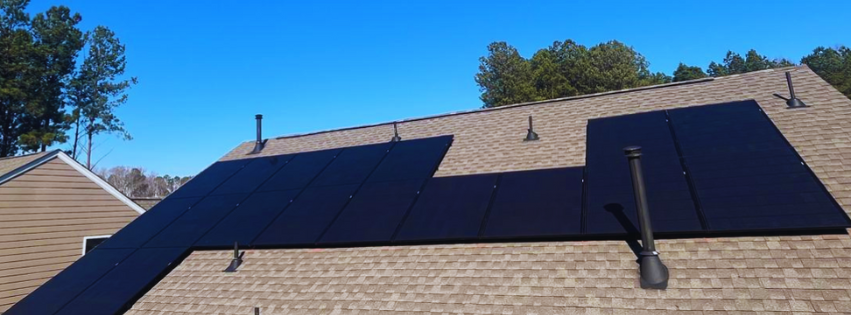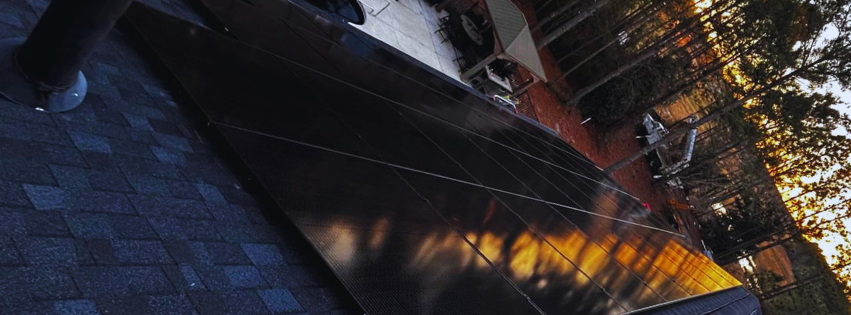Picture this: You’re soaring down a rollercoaster, the wind rushing through your hair, adrenaline pumping through your veins—all powered by the same sun beaming down on your face. Across America, this scenario is becoming reality as amusement parks embrace solar power in innovative ways. The cotton candy and thrill rides we associate with carefree fun are now meeting cutting-edge sustainability, creating an alliance that’s changing how we think about entertainment.
Amusement parks are uniquely positioned to become pioneers in solar innovation. With their vast, open spaces and sprawling rooftops, these entertainment venues offer prime real estate for solar panel installation. Their seasonal operation patterns align perfectly with peak solar production months, creating a natural synergy. What’s more, amusement parks serve millions of visitors annually, providing an unparalleled platform to showcase renewable energy in action.
The transformation is already underway. Solar power is revolutionizing the amusement park industry by slashing operational costs, creating energy independence, and changing the guest experience. From powering gravity-defying attractions to illuminating evening light shows, solar technology is silently fueling the magic behind today’s most forward-thinking parks. This helps us reimagine what sustainable entertainment looks like for future generations.
Solar Energy Basics for Amusement Parks
Amusement parks are energy beasts. The average medium-sized theme park consumes as much electricity as 2,000-3,000 homes—with larger parks like Disney or Universal consuming significantly more. This massive energy appetite stems from powering high-draw attractions, extensive lighting systems, climate control for indoor venues, and around-the-clock operations during peak season. Traditionally, this power has come directly from the grid, creating environmental impact and vulnerability to power outages.
Enter solar technology, which offers a surprisingly perfect match for these entertainment giants. The key advantage? Operational synchronization. Most U.S. amusement parks experience their highest attendance during summer months—when solar production reaches its peak. This natural alignment means parks can generate maximum solar power when they need it most. Many rides and attractions operate mainly during daylight hours, allowing them to run directly on solar power without extensive battery storage systems.
The practical applications reach beyond powering the newest thrill ride:
Parking Canopies: Those huge parking lots that sit baking in the sun? Many parks are transforming them into dual-purpose assets by installing solar canopies. These structures generate power while providing welcome shade for visitors’ vehicles. Six Flags Great Adventure in New Jersey implemented one of the industry’s largest solar carports, generating 4.5 megawatts of clean energy while keeping guests’ cars cooler.
Building Integration: From gift shop rooftops to restaurant awnings, parks are finding creative ways to integrate solar panels into existing structures. These installations often go unnoticed by guests but offset energy costs for climate control and lighting—two major energy draws in park operations.
Water Heating: Water attractions and food service areas require substantial energy for heating. Solar thermal systems can handle this load efficiently, heating water directly without converting to electricity first—an application perfectly suited for water parks and food service facilities.
Mobile Charging Stations: Some parks are installing solar-powered charging stations for guests’ devices, combining practical amenity with educational opportunity. These stations often include interactive displays explaining how the solar panels are converting sunlight into the power charging their phones.
The energy consumption patterns of amusement parks create both challenges and opportunities. Their peak demand often hits in late afternoon when rides are running at maximum capacity and air conditioning is working hardest—right when traditional solar production begins to decline. This has led innovative parks to explore creative solutions like:
- West-facing panel orientation to capture more late-afternoon sun
- Strategic battery storage to shift midday solar production to late-afternoon use
- Hybrid systems that combine solar with other renewable sources like wind
What’s most exciting is how these installations are becoming attractions themselves. Parks like Europa-Park in Germany and Morgan’s Wonderland in Texas have created exhibits where visitors can see real-time data showing how much energy the park’s solar installation is generating, creating an unexpected educational dimension to the guest experience.
As solar technology advances and costs continue to fall, we’re likely to see even more creative applications emerge in these unexpected venues of sustainability innovation.

Benefits of Solar Energy in Amusement Parks
The shift toward solar power in theme parks is yielding impressive dividends beyond the initial excitement of innovation. These benefits touch multiple aspects of park operations, visitor experience, and broader community impact.
Environmental Transformation
The environmental impact of solar-powered amusement parks is substantial. Six Flags Great Adventure in Jackson, New Jersey created a 23.5-megawatt solar installation that generates enough power to offset most of the park’s electrical needs. According to the company, this installation helps reduce carbon emissions and is one of the largest solar installations by any theme park in the world.
Beyond carbon reduction, solar-powered parks decrease reliance on electricity generated from fossil fuels, which can release various pollutants including sulfur dioxide, nitrogen oxides, and particulate matter. This transition to clean energy creates healthier environments not just for visitors but for neighboring areas as well.
Economic Sunshine
The financial case for solar in amusement parks grows more compelling each year. While installation costs require large upfront investment, solar systems provide long-term savings on electricity costs over their 25+ year operational lifespan.
The federal Investment Tax Credit (ITC) offers a 30% tax credit for solar system installations, which can improve the return on investment calculations for parks considering this transition. Many states also offer additional incentives, creating financial motivation for parks to invest in solar technology.
For seasonal operations, solar power can provide value even during off-peak periods through net metering programs, where excess electricity is fed back to the grid for credit.
Educational Opportunities
The educational potential of these installations represents another significant benefit. Innovative parks are transforming their solar investments into engaging educational experiences:
- Interactive displays showing energy production data in terms visitors can understand
- Solar-themed exhibits that combine entertainment with renewable energy education
- Educational programs that use the park’s solar system as a real-world science learning opportunity
Walt Disney World’s solar facility not only powers portions of the resort but has been designed in the shape of Mickey Mouse’s head when viewed from above—turning sustainability into a distinctive visual feature. This creative approach to solar installation serves as a conversation starter about renewable energy for visitors.
By combining entertainment with education, these parks are creating experiences that extend their positive impact beyond the park boundaries, inspiring interest in renewable energy among their visitors.
Challenges and Solutions
Implementing solar energy in amusement parks presents unique obstacles that go beyond typical solar installations. These entertainment venues face challenges related to their operational needs, physical layout, and visitor expectations. Innovative parks across the country have found creative solutions to these hurdles.
Intermittent Energy Needs
One of the biggest challenges for amusement parks is their fluctuating energy demand. Rides require massive power surges to start up, creating energy spikes that solar alone struggles to accommodate. Many parks operate seasonally or have different energy needs from day to night and weekday to weekend.
Cedar Point in Sandusky, Ohio tackled this challenge by implementing a hybrid approach. Rather than attempting to power their highest-demand attractions directly with solar, they installed a 10-acre solar array that feeds into the park’s overall energy system. This installation generates approximately 1.2 million kilowatt hours of electricity annually, offsetting their baseline energy needs while traditional power sources handle peak demands. This approach allows them to reduce their carbon footprint without compromising ride operations.
Space Constraints and Aesthetics
Many established parks face limited available ground space for solar installations, especially in urban areas. Maintaining the themed environment and visual appeal central to the guest experience presents another obstacle – industrial-looking solar arrays can clash with carefully crafted fantasy environments.
Disney’s approach to this challenge demonstrates innovative thinking. At Walt Disney World Resort, they transformed an otherwise unused parcel of land into a 270-acre solar facility while designing it in the shape of Mickey Mouse’s head when viewed from above. This installation generates enough power to operate two of their theme parks annually while actually enhancing their brand identity rather than detracting from it.
Meanwhile, Hersheypark in Pennsylvania utilized existing structures by installing solar panels on carports. This dual-purpose approach provides visitors with shaded parking while generating renewable energy, maximizing limited space without compromising the visitor experience.
Initial Cost Barriers
One of the most significant obstacles for many parks is the upfront investment required for large-scale solar installations. With seasonal operations and tight profit margins, the economics can be challenging even with long-term savings.
Six Flags Great Adventure overcame this hurdle through a power purchase agreement (PPA) with KDC Solar. Under this arrangement, KDC financed, built, and maintains the 23.5-megawatt solar installation, while Six Flags commits to purchasing the power generated at a predetermined rate. This partnership eliminated the need for Six Flags to make the massive upfront capital investment while still securing the environmental benefits and long-term energy cost stability.
Technical Integration Challenges
Integrating solar power into existing electrical systems, particularly for older parks with aging infrastructure, presents technical challenges. Solar power’s direct current has to be converted to alternating current and integrated with existing power systems without disrupting operations.
Legoland Florida addressed this by taking an incremental approach. They began with smaller installations powering specific attractions and gradually expanded their renewable footprint as they developed expertise and upgraded infrastructure. Their “Imagination Zone” was one of the first attractions to be fully solar-powered, allowing them to test and refine their approach before scaling up to larger installations.
As technology advances and more parks demonstrate successful implementation, the path to solar-powered entertainment becomes more accessible. These pioneers aren’t just overcoming challenges—they’re creating new models for sustainable operation that the entire industry can follow.
The Future of Solar in Amusement Parks
The solar revolution in amusement parks is just getting started. As technological innovations accelerate and climate considerations become increasingly urgent, the intersection of entertainment and renewable energy promises even more exciting developments on the horizon.
Next-Generation Solar
Tomorrow’s amusement parks may look different as emerging solar technologies create new possibilities. Transparent solar cells – already being tested in building applications – could transform glass surfaces throughout parks into power-generating assets without compromising aesthetics. Imagine a future where the windows of indoor attractions, restaurant facades, and even ride shields quietly harvest energy while maintaining crystal-clear views.
Solar fabrics and flexible panels are another frontier with promise for entertainment venues. These technologies could enable solar integration into themed elements like canopies, character costumes, and even the fabric roofs covering queue lines. Companies like Sistine Solar are already developing customizable solar panels that can display colors, patterns, and logos – allowing parks to incorporate branding directly into their energy-generating surfaces without sacrificing efficiency.
Integrated Energy Ecosystems
Forward-thinking parks are likely to evolve beyond standalone solar installations toward comprehensive energy ecosystems. These integrated approaches will combine multiple renewable technologies with smart storage and management systems. The experiential nature of parks makes them ideal testing grounds for visible innovations that might include:
- Kinetic energy harvesting systems that capture energy from guest movements (like footsteps on walkways) or from the mechanical motion of rides themselves
- Interactive attractions where visitor participation directly generates power
- Hydrogen fuel cells powered by excess solar energy to provide power regardless of weather conditions
- Microgrids that optimize energy flow between different park areas based on real-time needs
These integrated systems will likely incorporate artificial intelligence to predict energy needs based on weather forecasts, historical attendance patterns, and scheduled events – automatically adjusting energy capture, storage, and distribution for maximum efficiency.
The Path to Energy Independence
Complete energy independence is the ultimate goal for many parks, and the pathway is becoming more viable. While large destination resorts with massive energy requirements may take longer to achieve this milestone, smaller and medium-sized parks could reach this goal within the next decade.
One promising model is already emerging in Europe, where Tivoli Friheden in Denmark has made progress toward energy neutrality through a combination of solar installations, wind power, and battery storage. Their approach demonstrates how parks can leverage their unique physical assets – from open spaces to height advantages – to maximize renewable capture.
For larger parks, the journey toward energy independence will likely involve phased approaches, beginning with renewable-powered individual attractions, then expanding to land sections, and eventually encompassing entire properties. This incremental strategy allows parks to develop expertise, test new technologies, and spread capital investments over time while still making meaningful progress toward sustainability.
Maybe most transformative will be the evolution of parks from energy consumers to energy producers. As storage technology improves and renewable capacity expands, parks may generate surplus energy that can be returned to local grids – transforming seasonal entertainment venues into year-round clean energy providers for surrounding communities.
This evolution from energy-intensive businesses to community power partners is the most exciting possibility of all – one where the fun and fantasy of amusement parks become powerful drivers of real-world sustainability progress.

A Brighter, More Fun Future Powered by the Sun
As we look to the horizon, the convergence of amusement parks and solar energy becomes more than a practical solution to energy challenges—it embodies a vision of how entertainment venues can lead in creating a sustainable future without sacrificing an ounce of joy.
The transformation unfolding across parks nationwide is just the beginning. Each solar panel installed, each energy-efficient ride designed, and each educational exhibit created strengthens the foundation for an entertainment industry where sustainability and fun are inseparable partners.
For businesses looking to join this solar revolution, expert guidance is essential. 8MSolar stands at the forefront of this transformation as a leading provider of solar solutions for both commercial and residential applications. Their expertise in designing custom solar installations has helped numerous businesses across North Carolina harness the power of the sun while achieving significant energy savings.
What sets 8MSolar apart is our approach to solar implementation. Rather than offering one-size-fits-all solutions, we develop tailored systems that address each client’s energy needs, space constraints, and aesthetic requirements—the same challenges that entertainment venues face when transitioning to renewable energy. Our team of professional engineers guarantees that each installation delivers maximum efficiency while integrating with existing structures.
The future of amusement parks isn’t just bright—it’s solar-powered. It’s a future where the laughter of children echoes amid attractions energized by the same sun that warms their faces. It’s a future where the cotton candy and thrill rides of today meet the clean energy solutions of tomorrow, creating experiences that entertain, educate, and inspire. It’s a future where businesses demonstrate that sustainability and success can go hand in hand, powered by innovation and the limitless energy of the sun.
The question is no longer whether amusement parks will embrace solar energy, but how quickly and creatively they’ll harness its potential. As industry leaders continue to push boundaries and overcome challenges, solar-powered entertainment will shine as a beacon of what’s possible when imagination meets innovation—making every day at the park a sun-filled celebration of sustainable fun.

